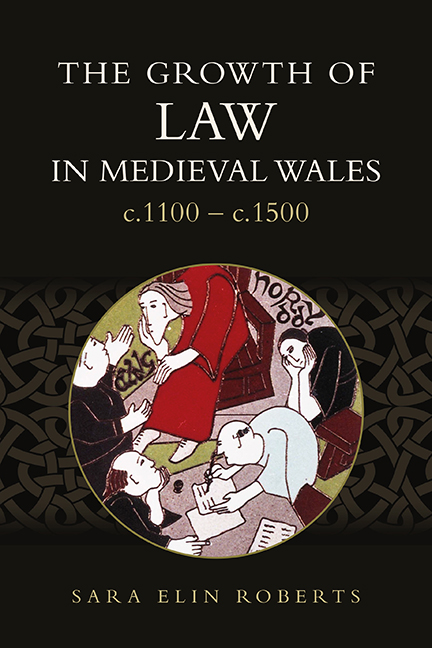5 - ‘Achwannec kyureith dylyedus y chynnal’: the Blegywryd Redaction
Published online by Cambridge University Press: 08 October 2022
Summary
Dywedadwy yw rac llaw o achwannec kyureith dylyedus y chynnal a gossodedic trwy gyuundeb gwlat ac arglwyd.
Henceforth will be spoken of additional law which ought to be maintained and which is set by the agreement of country and lord.
The aim of this chapter is to examine the Blegywryd redaction and its structure, and compare it to the Iorwerth redaction and its tripartite structure. Arferion Cyfraith (‘Practices of Law’), which is said to be a third part of the Blegywryd manuscripts, will be examined, as will the long-held idea that some manuscripts, particularly Blegywryd manuscripts, have ‘tails’ of ‘additional material’ appended to a main text of the laws. This chapter will present the argument that this so-called ‘additional material’ is no less important than the preceding text and should not be separated or given less attention. This follows on from the discussion in the previous chapter, primarily focused on the material in the Anomalous Laws, and the genre-based books such as damweiniau and cynghawsedd, which were often appended to the text of a Iorwerth manuscript. These Iorwerth books are very rarely described as being ‘tails’ – perhaps because of the organised appearance of their material, or because of their connection with the well-structured Iorwerth version. On the other hand, several Blegywryd manuscripts are seen to have ‘tails’ of additional material, and this is often ascribed to the manuscripts being later in date: they have absorbed later compilations of law but appended them to an existing text rather than incorporating the material into relevant points in the preceding text. As will be shown, this may not be a valid way of viewing these complex texts.
Manuscript Tails
Manuscript J is a beautiful law text in the hand of Hywel Fychan, one of the scribes of the Red Book of Hergest. Melville Richards's edition of J in 1957 was an impor-tant step in the study of the legal manuscripts. Apart from the printed edition, it has been digitised. It has a Blegywryd text, similar to that found in L, which was used as the base manuscript for Owen's Dimetian Code, followed by material largely from another redaction, Iorwerth.
- Type
- Chapter
- Information
- The Growth of Law in Medieval Wales, c.1100-c.1500 , pp. 133 - 160Publisher: Boydell & BrewerPrint publication year: 2022



